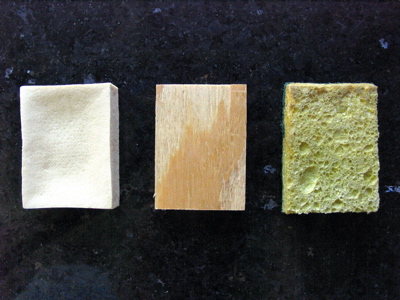Odiferosity
Maastrictian asked last night why rubbing stainless steel over a chopping board removes the odour of garlic.
The short answer is: I don’t really know, but then again, neither do any of experts I consulted. Nonetheless, with the aid of Harold McGee, the interweb, and lessons beaten into me by my middle school chemistry teacher, I have a long answer for you.
To begin with, McGee notes that acid ingredients, like vinegar and lemon juice, are traditionally used to mask the flavour of less than perfect fish because the free hydrogen bonds with the noxious compounds in fish. This process doesn’t actually neutralize their smell, but it does cause the offending molecules to become positively rather than negatively charged, which makes it easier for them to bond with water and other molecules, essentially gluing the odious bits down.
Knowing that rubbing your hands with a lump of stainless steel also helps remove the fishy odour, the suspicion must be that a similar process, based on static electricity, is at work. It’s entirely possible that a similar chemical reaction is actually taking place, but I couldn’t easily find enough information about the molecular structure of stainless steel to say.
This shows the chemical structure of the molecule responsible for the distinctive garlic smell. Someone who knows more than I do about chemistry should be able to figure out whether everything I’ve just written about fish will apply to garlic.



